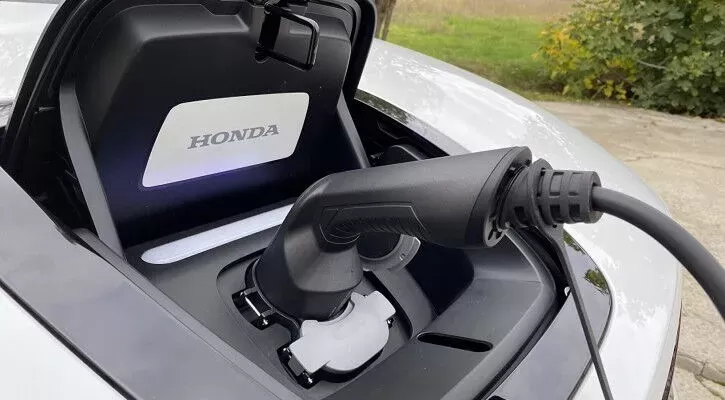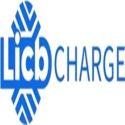Notifications

8 minutes, 19 seconds
-193 Views 0 Comments 0 Likes 0 Reviews

As a top EV charger manufacturer in China, LiCB Charge offers reliable AC and DC electric vehicle charging stations along with complete charging solutions.As electric vehicles (EVs) continue to revolutionize transportation, the importance of smart, efficient charging solutions is greater than ever. Whether you're a longtime EV owner or just beginning your journey toward sustainable driving, understanding the different EV charging modes can help you make the most of your vehicle.
Among the various charging options available today, Mode 3 charging has become the most popular and practical choice for both public and private use. From shopping centers and office buildings to residential garages, Mode 3 chargers are everywhere—and for good reason.
In this article, we’ll explore what Mode 3 charging is, what makes its cables unique, how it compares to other modes, and why it's a cornerstone of modern EV infrastructure.
Mode 3 charging refers to a dedicated AC charging method designed specifically for electric vehicles. Unlike older methods that rely on plugging into standard household outlets (like Mode 1 or Mode 2), Mode 3 uses dedicated EV charging stations that offer smarter communication, safer connections, and faster power delivery.
These chargers typically use Type 2 plugs (in Europe and many other regions) or Type 1 plugs (mostly in North America) and are installed with intelligent electronics that manage the flow of electricity and ensure safe interaction between the vehicle and the grid.
A Mode 3 charging cable is the essential link between your EV and a dedicated AC charging station. But it’s more than just a heavy-duty cord—it’s an advanced communication bridge.
Smart Communication: Enables two-way data exchange between the EV and the charging station for optimized charging.
Built-In Safety Protections: Guards against power surges, overheating, and electrical faults.
Higher Charging Speeds: Supports power delivery up to 22 kW, depending on your EV and the charging station.
Wide Compatibility: Works with both Type 1 and Type 2 connectors, ensuring use with a broad range of EVs.
Why is Mode 3 the go-to for everyday EV charging? Here's what makes it stand out:
Compared to household-level charging (Mode 1 or 2), Mode 3 can dramatically reduce the time it takes to charge your EV. A 7.4 kW Mode 3 charger can add 30–40 km of range per hour, while a 22 kW station can do triple that—ideal for overnight charging or during extended parking.
Mode 3 charging systems come with layers of safety features, including:
Auto shut-off if the cable overheats
Detection of ground faults and power fluctuations
Locking mechanisms to prevent accidental disconnections
Mode 3 charging stations are now a fixture of modern infrastructure. You’ll find them:
In shopping centers and parking garages
Along highways and at fleet depots
Installed in private homes and apartments
As cities push toward greener mobility, Mode 3 is becoming the new normal.
While Mode 3 is packed with benefits, there are a few considerations to keep in mind:
Installing a Mode 3 charger at home can be pricey. Equipment can range from $500 to $1,500, and professional installation may cost an additional $500 to $2,000 depending on your setup. However, this investment can be justified by:
Lower charging costs over time
Added property value
Future readiness as EV adoption increases
Mode 3 systems require a dedicated electrical circuit, and older homes may need panel upgrades or new wiring to support the load.
While Mode 3 is fast for AC charging, it’s still slower than Mode 4 DC fast charging, which can provide up to 80% charge in under 30 minutes. Mode 3 is best for daily use, not urgent road trip top-ups.
| Feature | Mode 2 | Mode 3 | Mode 4 |
|---|---|---|---|
| Power Source | Household socket | Dedicated AC charger | Dedicated DC fast charger |
| Charging Speed | Slow (up to 2.3 kW) | Medium (7.4–22 kW) | Fast (50 kW and up) |
| Installation | Plug-and-play | Requires electrician | Requires commercial setup |
| Safety Features | Limited | Advanced | Highest |
| Best For | Home/emergency use | Daily charging | Long-distance travel |
Summary:
Mode 2: Great for emergencies or occasional home use
Mode 3: Ideal for daily charging at home or work
Mode 4: Best for fast top-ups on road trips
Mode 3 charging is an excellent fit for:
Daily commuters who leave their cars parked for hours
Homeowners wanting a safe, efficient overnight charging option
Workplaces and businesses offering employee or customer EV perks
Fleet operators managing electric taxis, vans, or delivery vehicles
Its balance of speed, safety, and scalability makes it the most versatile charging method today.
Not all Mode 3 cables are created equal. When selecting one, keep these factors in mind:
Type 1: Common in North America and Japan
Type 2: Standard in Europe and many other regions
Most cables range from 3 to 10 meters. Choose a length that suits your parking setup without unnecessary bulk.
Make sure your cable matches the output of your charger and the input capacity of your EV. Common options include:
16A single-phase
32A single or three-phase
Up to 22 kW
Look for features like:
IP-rated weather resistance
Reinforced connectors
Flexible, tangle-free design
Included carrying case or wall hook
Mode 3 charging has emerged as the sweet spot for EV users around the world. It offers a practical blend of speed, safety, and ease of use—making it the perfect choice for daily charging at home, work, or in public.
While not as fast as DC charging, Mode 3 is far more affordable, accessible, and sustainable for long-term use. Plus, its compatibility with smart systems ensures you’re future-proofed as the EV ecosystem evolves.
Whether you’re plugging in at a local store or setting up a home station, Mode 3 charging gives you the confidence to charge smarter and drive further—every day.
China EV Chargers EV Charger Manufacturer Smart EV Chargers Electric Car Chargers Electric Vehicle Chargers Electric Car Charging Stations

